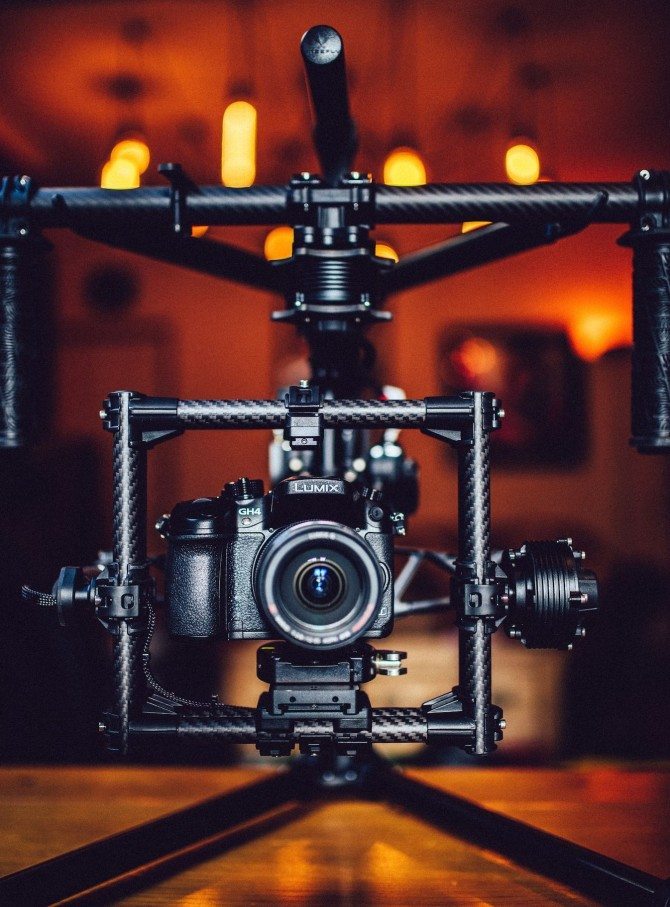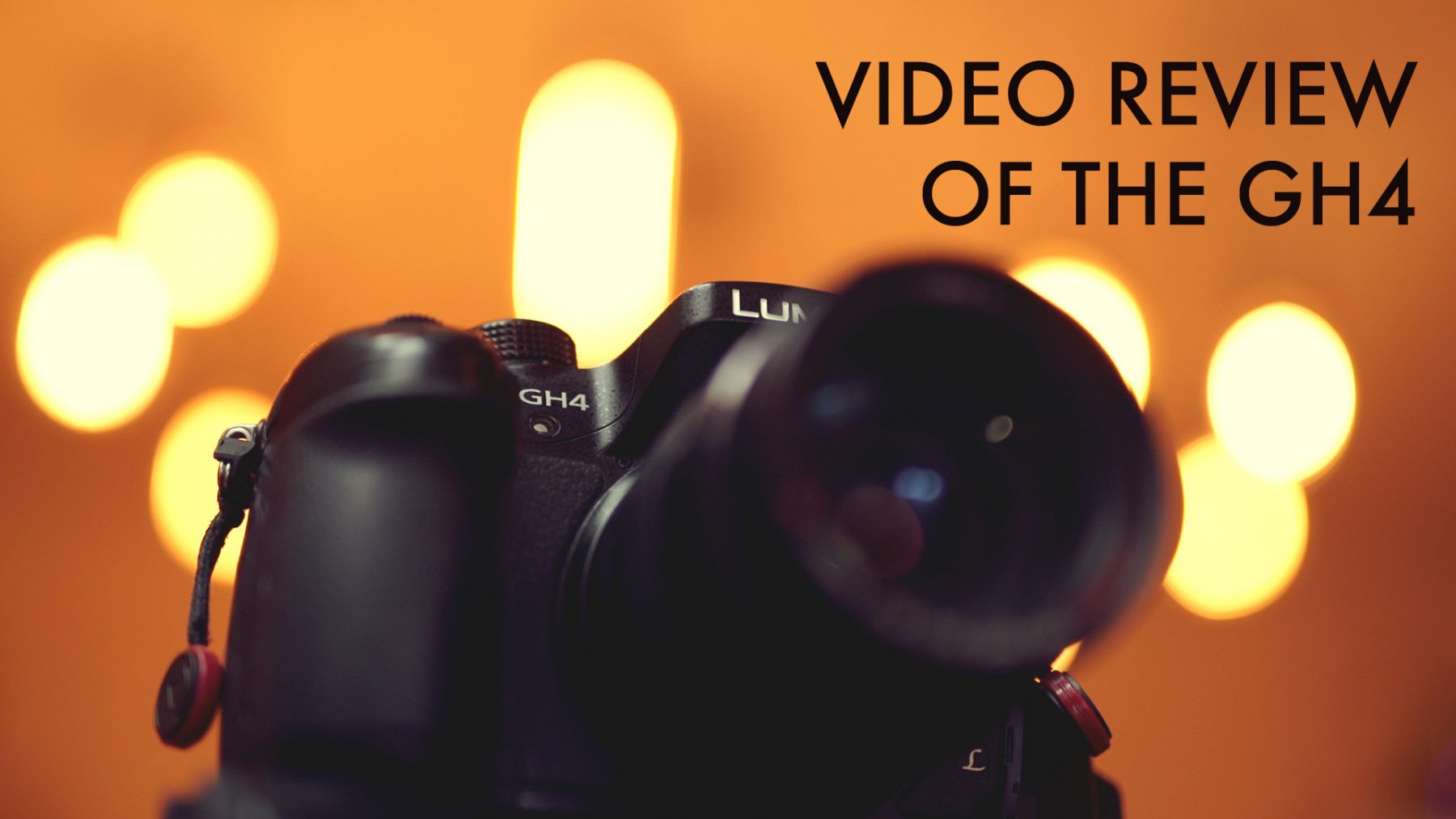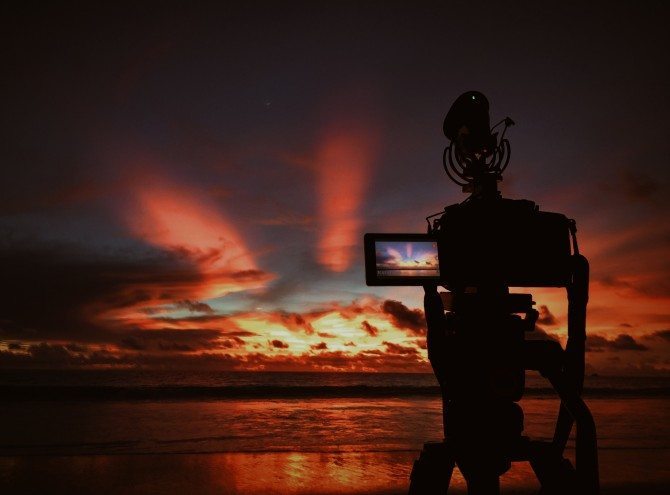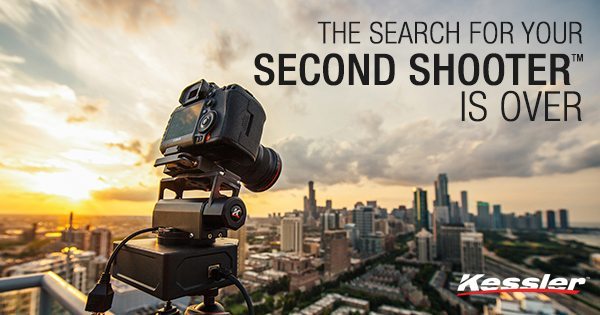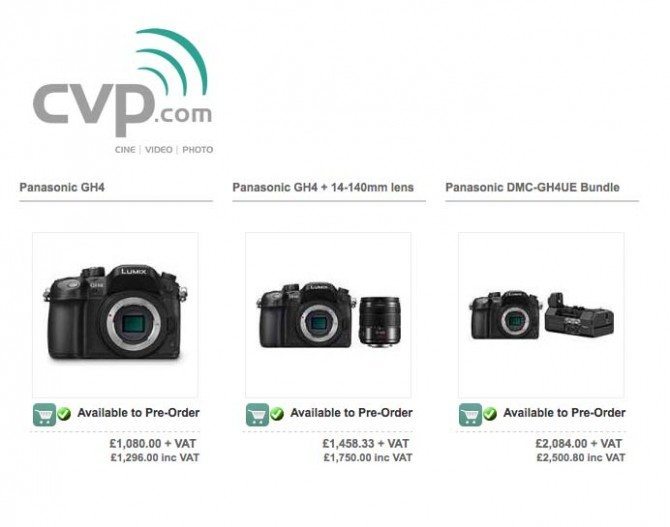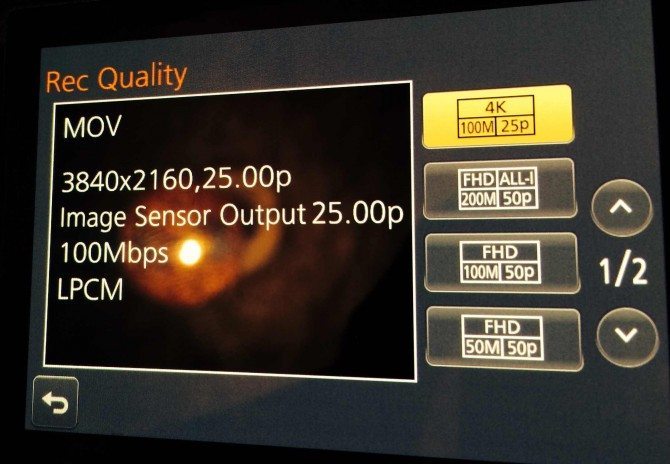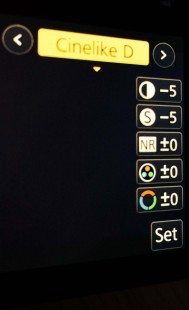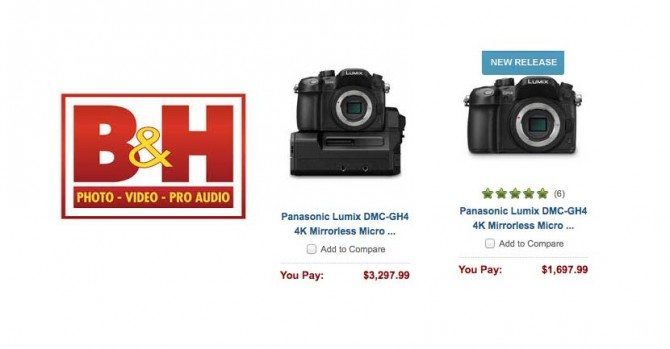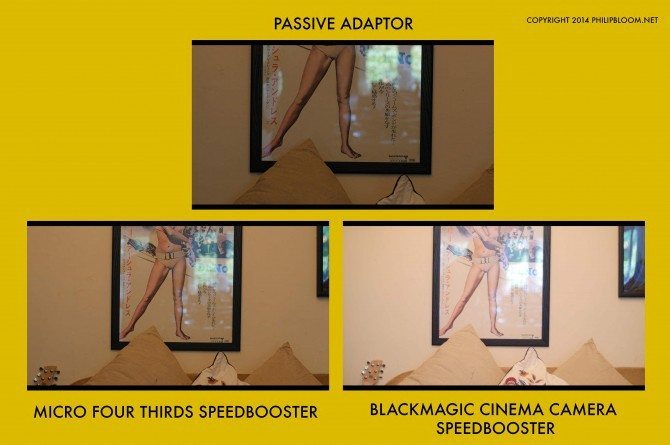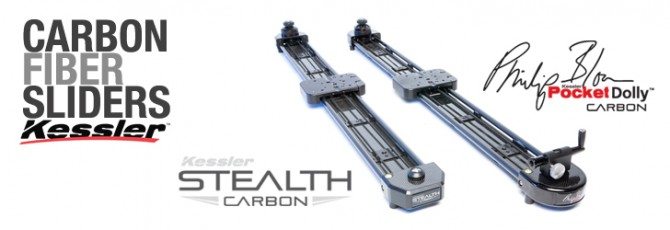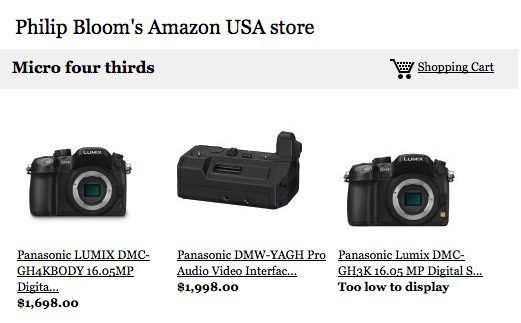UPDATE: 30th June 2014
Do make sure you read the rest of the post not just the video review that I have finally put up! Was it worth the wait? Only you can decide. I don’t cover everything. There is too much for a video review. As it is it’s almost 40 minutes long.
There is loads of info lower down in this post plus do check out Camera Labs excellent thorough written review and EOS HD’s E-book.
Below my review is Dave Dugdale’s excellent (and longer!) video review. He covers loads of stuff, more than me! It’s always worth checking out other people’s opinions. Never trust just one. ESPECIALLY MINE!!
First up is the latest in my series of “4K postcards.” All the rest are shot on the 1DC. This is my first GH4 one and unlikely to be my last. Go to the Vimeo site plus and pro users as you can download a HEAVILY compressed 4K MP4 of it for personal use only please, no re-uploading either. Thanks!
Also any donations to the Vimeo tip jar on the review page is gratefully received. These take weeks of work and are self funded. I have only done one other review this year because of the amount of time it takes and fitting it in. If this was useful please show your thanks via the tip jar or via any of the affiliate links if you want to buy the camera. It won’t cost you a penny more but helps these reviews continue! THANKS!
4K: Postcard from Phang Nga from Philip Bloom: Four Corners on Vimeo.
Filmed on the Panasonic GH4
Shot on my holiday at the same time as my DJI Phantom/ GoPro film “Koh Yao Noi” gopb.co/koh
Music by Tony Anderson “A long way out” from The Music Bed GoPb.co/musicbed
Graded with FilmConvert 10% off wide code bloom at gopb.co/filmconvert and James Miller’s Custom LUTs
Glass used:
LUMIX
7-14
12-35
100-300
SIGMA (ART) with Metabones Cinema Camera Speedbooster for Nikon mount
18-35mm F1.8
35mm F1.4


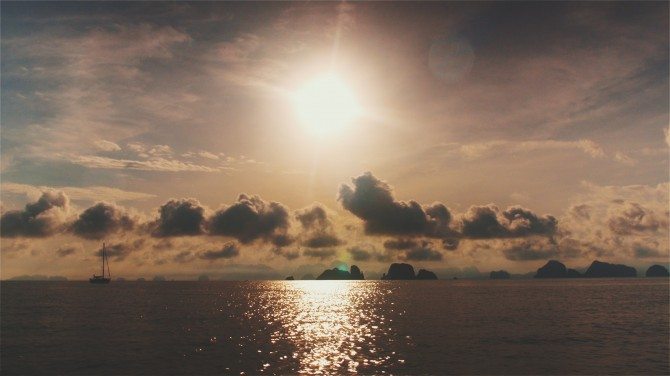
This is an evolving review where I will be adding bits to it as I go along. It’s a bit messier this way as I have to edit stuff if my opinion changes. The other way is to wait a few weeks until I am all done and the video review goes live! I think it’s better this way! 🙂
You will see the edits as they will be dated within the body of the post in BOLD RED.
ETHICS STATEMENT: This review has been made possible by the sponsorship of Holdan UK, Ltd. Distributors of many products and brands including Zeiss, Blackmagic, Teradek and Panasonic. They have been instrumental in making this happen when other avenues of getting hold of camera to review proved fruitless. They initially provided me with the brief loan of one of the only GH4s in Europe at that time whilst we were both at NAB in Las Vegas last month. They have provided the GH4 for this review and although they are financially subsidising part of the costs in making this, it still remains an entirely independent, unbiased review, the same as all my other camera reviews.
This review is in no way affiliated to Panasonic and any views or opinions expressed within the review are mine entirely.
Never base a purchase, especially a substantial one like this, on one person’s opinions. Read many, watch many and try before you buy if you can. If you decide to purchase the camera and you are in the UK, please do so through a UK official dealer so you have a valid UK warranty. If you are not UK based, the camera is available through my B&H Photo Store and Amazon Store affiliate stores. Any purchases through these links cost you nothing more but do help to keep this site running, and I am very grateful for your support. Thank you! Please read my ethics statement here for more on this and for other site sponsors and affiliates.
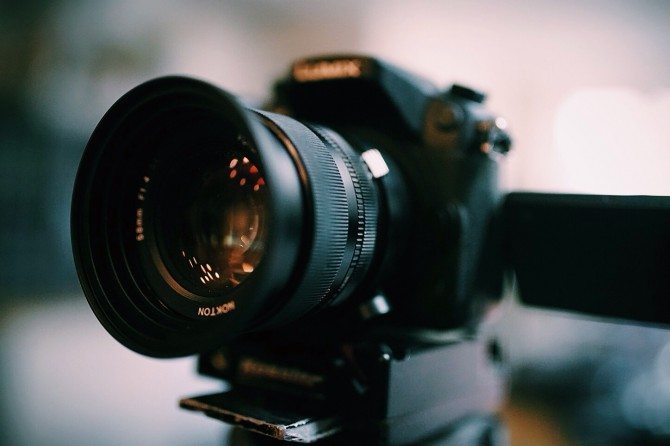
Update 17th May 2014: By James Miller
IN CAMERA COLOUR CONTROLS:
Normally I would steer clear of in camera effects that burn in adjustments because in other cameras this was never a good idea and would result in image deterioration. But this does not seem to be the way with the GH4. Have a look at the short video below shot with screen overlays via the Atomos Ninja Blade for an idea of the results.
I wanted to see what in camera colour profiling would be like on the GH4. For this test I put the Luminance Level to 16-235 opposed to the higher 16-255. Mostly because I want a simple path of handing on files to production without wording about Luminance clipping.
Starting at Cinelike V I reduced the sharpness to -5 to take the edge away from the USM style in camera sharpening. I also but the Noise Reduction to -5 to remove the plastic mush that can occur in the images. I set the Saturation to -5 and +1 on Hue for personal preference.
Next I pushed up the Master Pedestal Level to +15 the factory is 0.
I then brought up the i.Resolution to ‘Standard’. This helps reduce the noise a tiny bit, trade off is slight.
Finally I set the i.Dynamic to ‘Standard’ too. This will really lift the image. On exterior daylight shooting I have set to high with great results.
If you treat the image to be colour graded you can reduce the blacks and mid tones done a little for taste. Its a much cleaner way then pulling up in post. May be handy for some situations, but its not a substitute for light and camera gain. Think of it more to enhance the image, bringing it closer to what your eye sees.
Once you grade your image any noise increase in the shadows will fall away giving slightly for dynamic range.
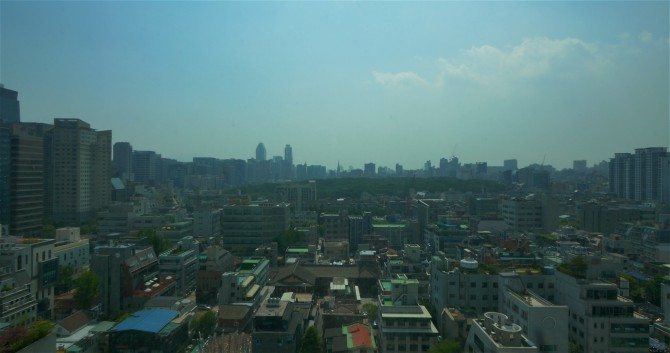
11th MAY 2014: These are just my initial thoughts. I have not used most of the camera or shot with it in anywhere near enough different environments to form a solid opinion. All I can do for now is share with you what I have found and what I like and dislike so far!
A lot of people interested in this camera will be new to the GH series, so this post is not just a review but also an introduction to the system.
Whilst Panasonic Pro Video division have barely done a thing since the release of the AF100, their consumer division have not sat still. With every generation of the GH series of cameras they have improved the camera. Each new release is a new generation, whereas other companies release new models with incremental improvements.
The GH1 was groundbreaking at the time of its release, a mirror-less, interchangeable-lens stills camera that shot full HD video and with full manual control. It had an EVF, a flip-out screen and working/ quite usable autofocus (If you are that way inclined!)
It had flaws for sure and was terrible in low light. It was pretty innovative and I actually got this camera before I got a Canon 5DmkII. Only by a few weeks, but it was still first (well technically the Nikon D90 was my first stills camera that shot HD video, but that camera wasn’t that great!).

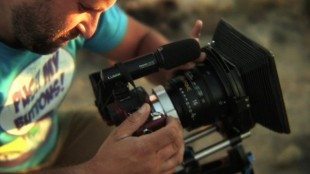


The GH2 improved upon the GH1 in many areas. The thing that really made both the GH1 and GH2 better was the firmware hacks that gave us much better bitrates. The one for the GH2 especially turned that camera into an amazingly detailed imaging device. It didn’t improve the sensitivity, but it got past the AVCHD limitations and showed us what could be possible.
I shot the launch film for the GH3 back in August 2012 for Panasonic, Bruce Logan directed. It was a very early model and barely worked when we used it, but I got to see what had been added. Mostly they gave it better bitrates, an All-I codec, a bit more control over the image and about a stop more useable sensitivity. Mostly though, it gave us an official version of the hacked GH2 but with added aliasing, which was disappointing. It was probably the least groundbreaking in some ways, because of that. I felt it was a disappointment….although if there hadn’t been the GH2 hack I am sure I would have felt differently.
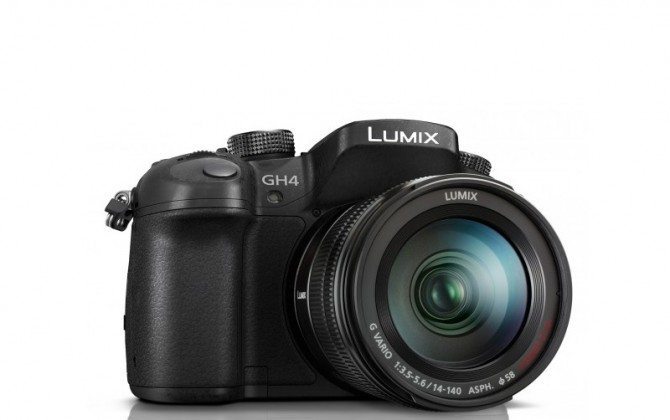
The GH4 though is really something quite different indeed. What it can do now compared with the GH3 is pretty substantial. Based purely on specs, this camera has the potential to become the number one low-budget filmmaker camera…but that’s on specs. The reality is often different, but let’s just see what those specs are:
- 16.05 Megapixel Micro 4/3 Sensor
- 4096 x 2160 up to 24fps (100Mbps)
- 3840 x 2160 up to 30fps (100Mbps)
- 1080p up to 60fps
- Variable Slow Motion in-camera up to 96fps (not a sync-sound format)
- 200 Mbps (ALL-Intra) or 100 Mbps (IPB) at 1080p
- 4:2:2 10-bit or 8-bit External HDMI (4:2:0 8-bit internal)
- Cinegamma Modes
- Peaking and Zebras
- Many more professional video features including curve adjustment, timecode and much more
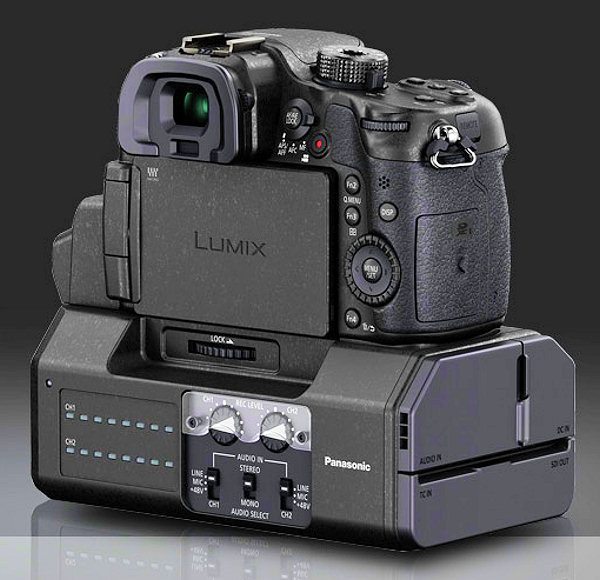
There is a add on unit that costs more than the camera, the “DMW-YAGH interface unit”. It’s a bit of an ugly bugger, truth be told, but it is unique and adds some impressive specs to the camera.
Naturally, the headline feature of the GH4 is coincidentally tied in with the model number, 4K. Internal 4K too. There are not a lot of large-sensor cameras around that shoot 4K internally. If we go with this price bracket, the only one that comes close is the Blackmagic 4K. Next closest, which is a guess as no official price has been announced, is the camera that wowed many ay NAB, the Sony A7s. Tis is an impressively specced camera with gorgeous footage coming from it so far….BUT there is no internal recording of 4K – it just outputs it, so you need a 4K HDMI recorder. So there we go. This camera is pretty unique. The only other one (which has a 1inch sensor) is the Sony AX100 handy cam. The AX100 actually quite nice but has a small sensor and other issues. I have one at the moment, and ideally would like to review it…a mini review at least. After all, I don’t want to commit to all these reviews as I struggle with time. I didn’t do a video review of the Blackmagic 4K for a different reason: my initial thoughts post nailed it. There was nothing more to add.
My initial thoughts on this camera were that it looked very similar to the GH3 in appearance. If felt solid without being heavy and thankfully not too plasticky. Looking at the connections, I saw the mini HDMI has been replaced by micro HDMI. I don’t like either to be honest, it’s a shame for sure.
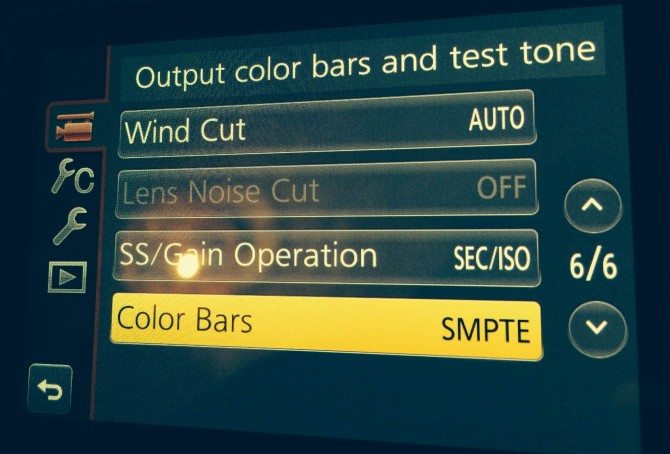
It’s when you go into the menus that suddenly you see all the changes. There are so many options that you almost want to get the manual out and read about them…don’t be silly! Blokes don’t read manuals! 🙂
Just with record modes we have .mov, mp4 and AVCHD. It doesn’t make a huge amount of difference whether you choose .mov or mp4, as they are just containers. The contents remain the same. There are some caveats to that, which I will touch on later.
To get full 4K 4096×2160 mode we have to be in “24.00hz Cinema) mode in the system frequency setting. If you select 59.94hz or 50.00hz then you won’t get the full 4K, you get “4K UHD” which is 3840×2160. There is nothing really wrong with that. UHD (Ultra high definition) is 16:9 ratio which of course is what we want for broadcast. I don’t know how many of you who shoot for broadcast HD shoot 2K…not many! All the “4K” TVs are UHD. So as I said, not a big deal.
When it comes to HD we have a plethora of options:
Full HD All-I with a MASSIVE 200MB/S bit rate recording as 50p/60p or 24/ 25p/ 30p
Full HD IPB mode at 100MB/S recording as 50p/ 60p or 24/ 25p/ 30p
Full HD IPB mope at 50mb/s recording at 50p/ 60p or 24/ 25p/ 30p
In fact, the massive 200mb/s bitrate for full hd makes the 4K bitrate of 100mb/s seem paltry.
It really is terrific to have PROPER video assist functions like focus peaking, zebras, waveforms. These are immeasurably helpful.
The ability to tweak the image is also very impressive. The profile that I and most people have been using is Cinelike-D. I have additionally turned down the contrast for an even flatter image and the sharpness to -5. This isn’t “off”. There is no off mode but, it’s as little in-camera sharpening as possible. The camera is very sharp in 4K mode especially, which tends to make things too “video.” Detailed is good. Sharp is not. 35mm film is detailed for example, but it’s not “sharp”. I haven’t messed around with noise reduction yet. You can also change the gamma curve. This is fantastic to have in a camera like this!
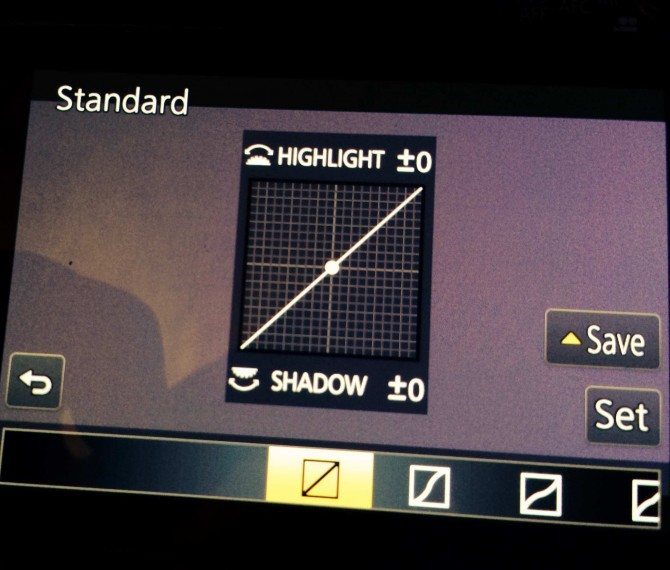
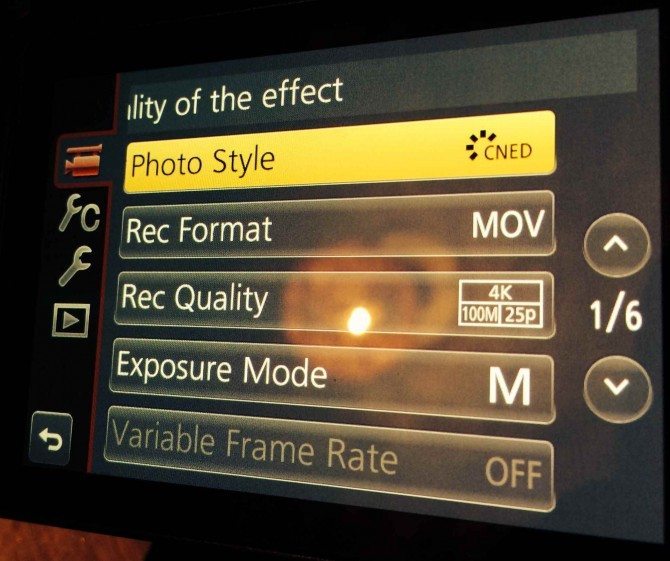
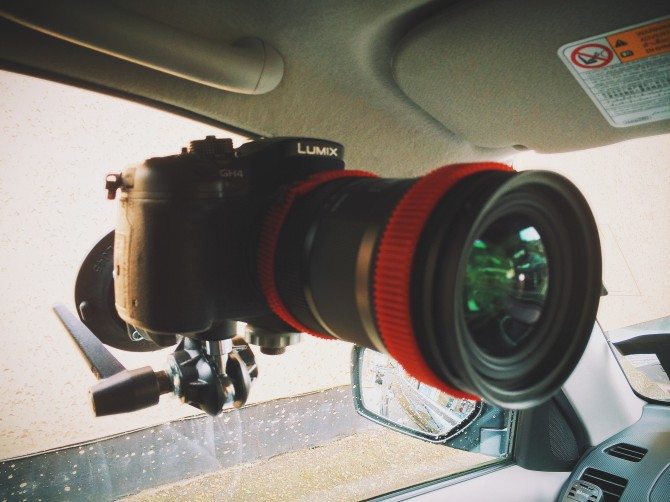
I took the camera out with me the day I got it to do a little bit of filming. Using a couple of suction mounts and only touching and repositioning the camera when I was pulled over, I filmed various shots with angles, all in the UHD mode. I did shoot in Cinelike D mode, but I think I may have altered the gamma curve a little!
My truck is a diesel so it vibrates a lot. This wasn’t great for the camera, as it does suffer from rolling shutter, and the vibrations caused lots of issues. Most CMOS cameras would have had the same problem, to be fair.
I used the following lenses in this test.
Sigma 18-35mm F1.8 Nikon mount with Metabones Speedbooster
Voigtlander 17.5mm and 25mm F0.95
Lumix 7-14mm F4
Lumix 12-35mm F2.8 OIS

So far I have only shot in the UHD mode. No HD, no slow motion. There is a lot to go through, and I need to make sure I am thorough for my video review as usual!
From what I have been told by my fiend and business partner, the HD mode, whilst not as detailed as the 4K mode, is still pretty damn good. Naturally, I will test this for the video review and for this post.
One thing I was very keen to test out was how well it did with the Speedbooster. Metabones have created an incredible product with this (You can read all about it here.) For micro four thirds (MFT), they have a standard one for the GH cameras, an optimised one for the MFT Blackmagic Cinema Camera and one especially for the pocket camera. They do magic, as far as I am concerned! They give the camera a pseudo larger sensor by focusing all the light from a large lens onto a smaller sensor, and that means the image is brighter and you get a much wider field of view. The light gain on the Pocket Camera with the special speedbooster is about 1 and 2/3rds stops and gives it an amazing field of view improvement from around 3x crop to 1.75x crop. This is amazing.
The one thing they have not managed to do yet for MFT is make one for Canon EF glass. They have for the Sony e-mount, just not for MFT yet.
The speedboosters I used for MFT cameras are all Nikon mount, not Canon EF. So what is the issue in making one to work with Canon glass? All I can imagine is that the protocol for getting the MFT cameras to send power and also communicate with the adaptor must be causing them a problem. Perhaps because they are trying to make one for all the MFT cameras, and that is where the issue is? I don’t know. For now through, you have to live without it.
There are copies on Ebay which say Canon/ MFT speed boosters, but these are completely passive. No electronics, which means not much Canon-made glass will work other than the Cinema glass. Only lenses with a manual aperture will work, and there are not many of those! Samyang / Rokinon are the only Canon EF mount lenses I have that would work here. So don’t be fooled. Read the description. If it says no electronics, give it a miss!
There are a 3 options as far as I know that let you have iris control (well, two to be strict) with Canon lenses on MFT cameras. You sort of do with the one from Kipon, as it gives you a secondary iris. It sort of works, but it’s not quite the same. The depth of field isn’t right, there is darkening of the image vignette style at times. It’s better than nothing and won’t of course power IS and it won’t work on some Canon glass, like the 85mm F1.2 which need power to even do manual focus.
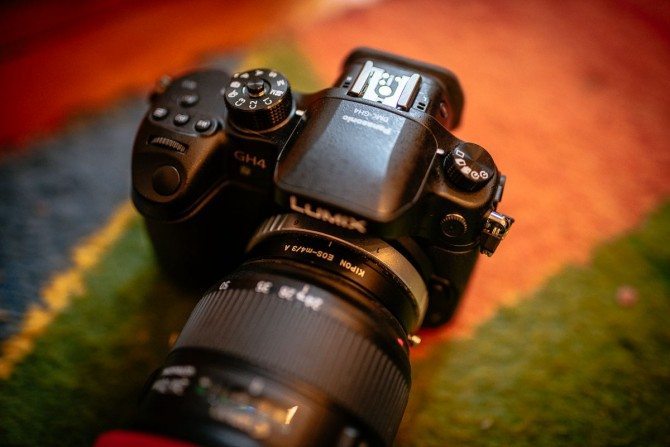
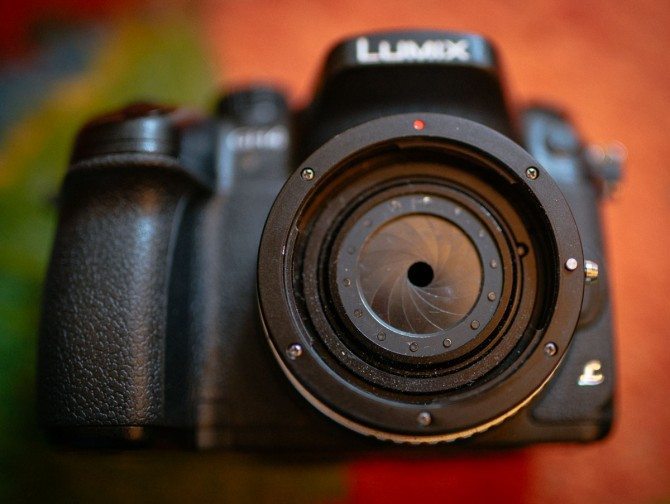

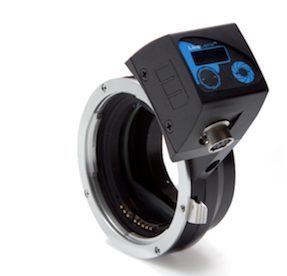
The adaptors which do work are the Redrock Micro live lens, quite old now. It works, but the lens mount is not very solid and it doesn’t support some of the lenses or IS. It costs around $600.
The very good but expensive and somewhat cumbersome MTF services one called the Effect. This is around £1100. So not cheap. Both of these use external boxes.
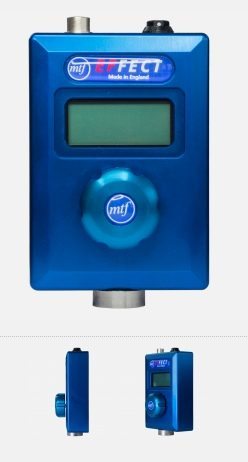
Speedbooster really helps for cameras that are sensitivity-challenged. Blackmagic cameras especially, but even the GH4 isn’t that great in low light. Compared to the Blackmagic 4K it’s way better, but I wouldn’t go upto 1600 ISO unless I absolutely had to. But giving us a stop more light is a huge help. The other big plus are the few options for wide angle lenses. Being able to use the Tokina 11-16mm F2.8 (my favourite affordable wide angle lens for non full-frame cameras). Especially if you shoot in 4k or UHD mode, as it’s cropped.
To avoid moire and aliasing for the 4K mode, they have sampled the sensor 1×1. Now you may think “how can that be?” 4K for a 16:9 sensor is 8MP. This sensor is 16MP but it’s not 16:9, it’s 4:3. As you can see below from the graphic from EOSHD, the usual MFT crop of 2x would result in an image too big, so rather than find a way to reduce the image size they simply cropped it even more. 2.3x crop in full 4K mode. Even more so in UHD. That’s actually a similar crop to the Blackmagic Cinema Camera.
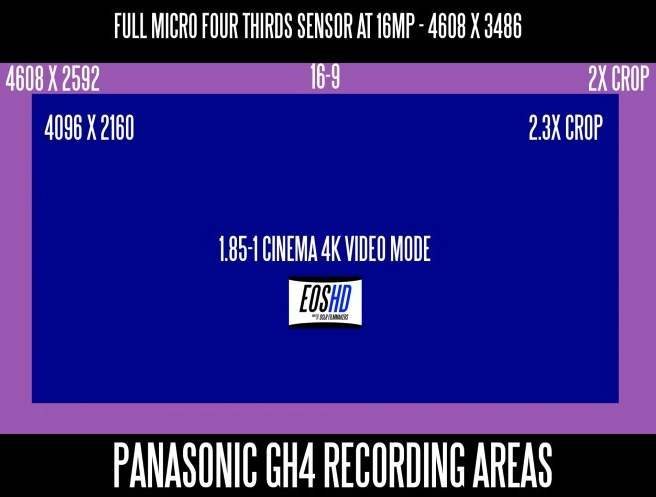
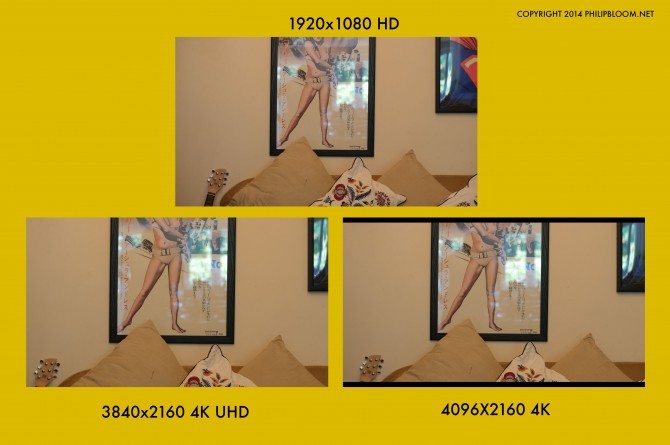
To get to HD they have to reduce the number of lines, they can’t sample 1:1 for that. I don’t know what image issues come from this. James Miller tells me he can see edge softness and noise grain, I need to check this out myself.
As you can see, we lose some of the frame as we move to UHD and full 4K, which is slightly wider but still not as complete a field of view as the HD mode.
So, going back to the Speedbooster, knowing the crop is around 2.3x using the BMCC 2.5K one, you not only get a hell of a lot more light coming in but the field of view is greatly increased, as you can see from my comparison below. The 3rd image from the Cinema Camera Speedbooster is much wider and much brighter. These were all taken at exactly the same camera settings.
Normally the MFT speedbooster would give us a stop more light and a field of view akin to Super 35mm, but as we are not using the whole sensor, so this is less. I haven’t measured the FOV or the F-stop increase but it’s not 1 stop of super 35mm. With the Blackmagic 2.5k cinema camera one, though, we are getting a field of view of around 1.3x crop of full frame. This is pretty much the same as the 1DC crop in 4K video mode. That’s pretty impressive.
A word of warning though is that the Blackmagic one sits closer into the body than the standard one. This WILL interfere with the mechanical shutter…just. To avoid this, set the camera to electronic shutter only. This means the mechanical shutter won’t descend and you will be fine. That’s actually a cool point. With the electronic shutter you have a totally silent stills camera. Great for stealth shooting! I wish my Sony A7R had the same mode. It’s the noisiest shutter I have ever heard!
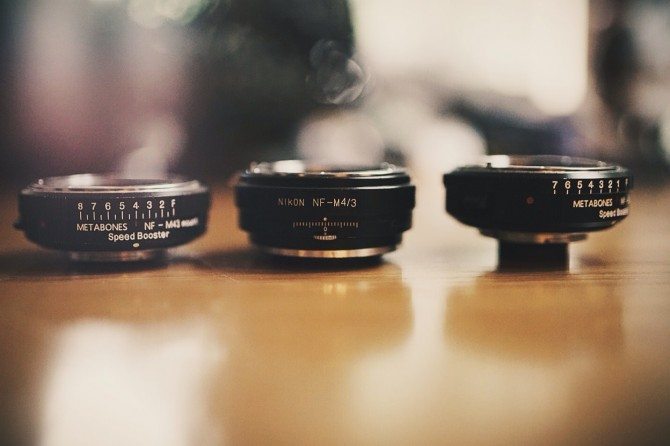
![]() Could you use the camera without the Speedbooster? Of course. I have lots of wonderful Micro Four Thirds lenses. Most of them are manual but I have some Lumix ones that will let you use autofocus and support optical image stabilisation. In the photo below, I have a mixture of MFT glass and Nikon mount glass. From left to right on each line we have the Voigtlander 17.5mm F0.95, Voigtlander 58mm F1.4 Nikon mount, 100-300 Lumix with OIS, Voigtlander 25mm F0.95, the truly excellent as essential lumix lens 12-25mm F2.8 with OIS, another amazing lens is the SLR Magic 12mm F1.2, Lumix 7-14mm F4 and the bottom pic is my favourite zoom, the 18-35mm F1.4 from Sigma. Even though that lens is designed for crop sensors it doesn’t vignette on the BMCC 2.5k Speedbooster.
Could you use the camera without the Speedbooster? Of course. I have lots of wonderful Micro Four Thirds lenses. Most of them are manual but I have some Lumix ones that will let you use autofocus and support optical image stabilisation. In the photo below, I have a mixture of MFT glass and Nikon mount glass. From left to right on each line we have the Voigtlander 17.5mm F0.95, Voigtlander 58mm F1.4 Nikon mount, 100-300 Lumix with OIS, Voigtlander 25mm F0.95, the truly excellent as essential lumix lens 12-25mm F2.8 with OIS, another amazing lens is the SLR Magic 12mm F1.2, Lumix 7-14mm F4 and the bottom pic is my favourite zoom, the 18-35mm F1.4 from Sigma. Even though that lens is designed for crop sensors it doesn’t vignette on the BMCC 2.5k Speedbooster.
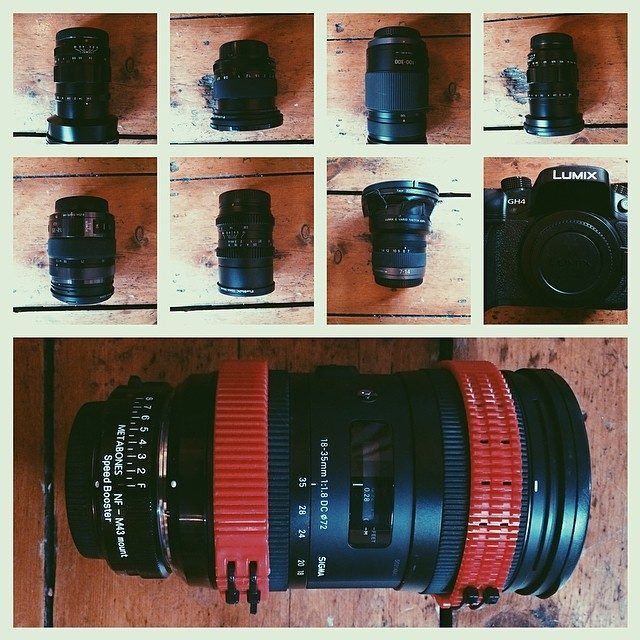
Let’s take a look at the detail of the 4K image now. Below is a frame of me from the video earlier in this post. Each of the images below is downloadable and 3840×2160 in size. They are sampled from a UHD timeline in Premiere where I simply zoomed in for each one. The first one is 100%, the 200%, then 400%, then 800%. That’s a hell of a crop in, way smaller than 4K and HD but then left on the 4K timeline. It does show you how much detail the camera is capturing.
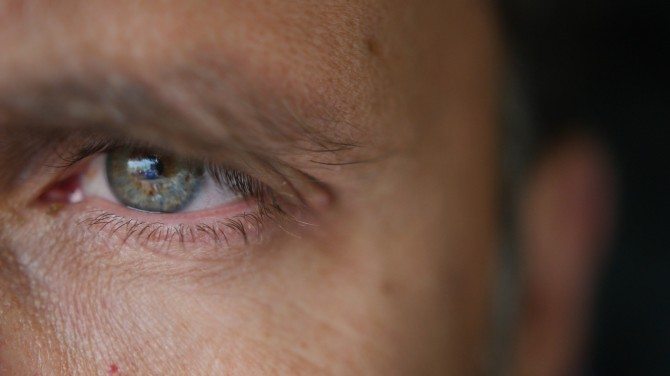
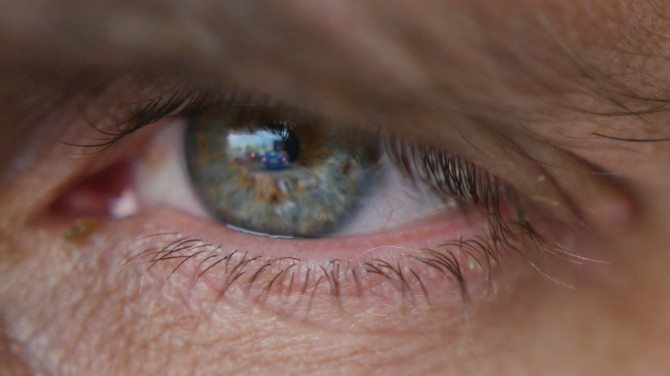
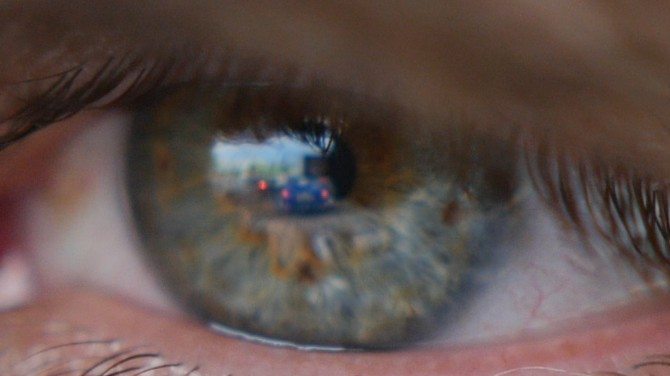
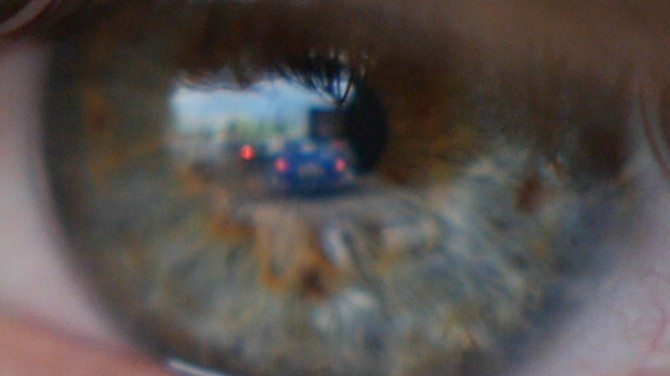
This sort of ability to crop in terrific. Especially if you master in HD. The flexibility it offers you is astounding. Just don’t use it to be lazy. To show you the power of cropping in 4K this linked post shows just what is achievable. It was shot in 4K on the 1DC but as you can see above the detail on the GH4 is pretty good. I will be testing this out in comparison with my other 4K cameras, 1DC, F55, Blackmagic, Sony AX100, FS700…maybe even my 4K smart phone! 🙂
One last thing for now, which is really impressive feature wise, is the ability to record a 10 bit signal out of the micro HDMI in 422, not just 8 bit which is the norm. This is a massive deal, and very few cameras let you do this, certainly no DSLRs not even the 1DC…in fact my C300 doesn’t either. The difference between 8 bit and 10 bit huge. Using external recorders when you have highly compressed in-camera modes like AVCHD at 24mb/s. Devices like the Atomos Ninja Blade are excellent for recording in ProRes or DNXHD, but if the camera can only output 8 bit, even though ProRes is 10 bit, you still record 8 bits of data. The image will band just as easily in ProRes HQ at 220mb/s as it will in 24mb/s. When you go to 10 bit, you get 4 times as many levels of colour for each RGB channel. To not have banding issues is huge, but it will require you to use an external recorder, using the camera only, not the YAGH interface. Apparently the camera also outputs 10 bit 422 in 4K mode. I have no way of testing this as my only 4K capable external recorder the 7Q does not accept it, and I have been told by Convergent Design that it will require the YAGH unit for 4K recording. That’s a real shame. Let’s see what the Atomos Shogun can do with it.
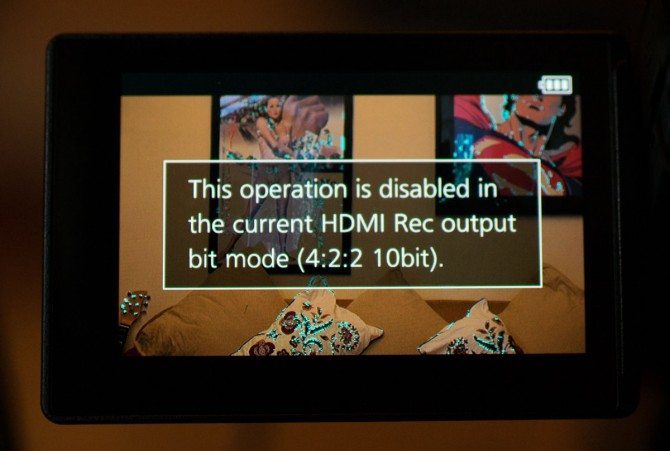
A little caveat, when you set it to output 10 bit: you cannot record internally, it’s disabled. 8 bit no problem. Interestingly, to get both my Convergent Design 7Q and Atomos Ninja Blade to get the output I had to set the camera to AVCHD mode. I have no idea why. This isn’t ideal, as it will output the image in a 50i or 60i stream depending on your record frequency. It just adds another post step. It is worth it though to get that 10 bit. This does seem a bit odd, I will investigate!
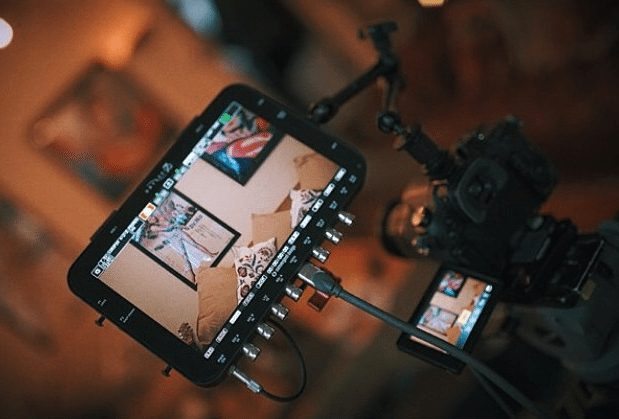

Oh and despite a nice EVF I have stuck a Zacuto Z-Finder on the screen. I don’t like touch screens, to be honest, as I am WAY too greasy and you can control everything with the plethora of buttons on the camera. The EVF is fine, just nowhere near as good as my A7R which is exceptional. The rear LCD is now twice as dense pixel-wise as the GH3, which means when you put on a 2.5x z-finder it’s wondrous! The only annoying thing is it’s hard to put a sticky frame on it, even though they make them. It has a raised part on the left hand side of the frame which makes sticking it on problematic. James Miller (again) carved a bit out of his Pocket Camera Z-Finder frame so it’s flush. I would recommend the normal Z-Finder though (junior or pro) simply because the pocket camera one is too big for the screen and sits a bit out and makes it not possible to flip the screen around 180 degrees. Zacuto do make their gorilla frame that screws onto their base plate, but I don’t like that as it means two base plates (my tripod plate goes under that), and the ability to flip out the screen at all it gone when it’s mounted.
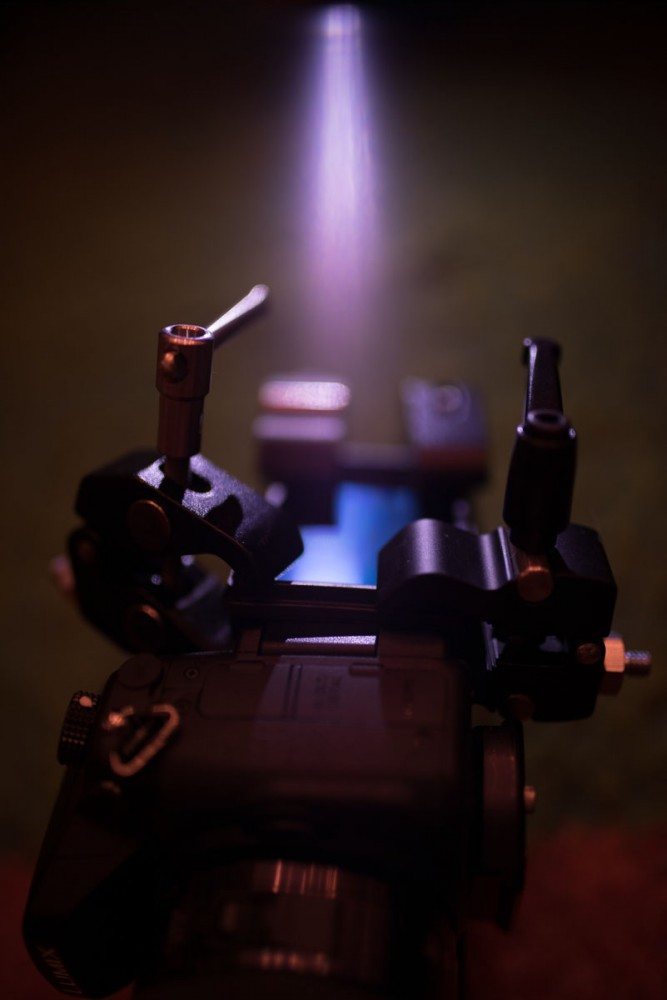
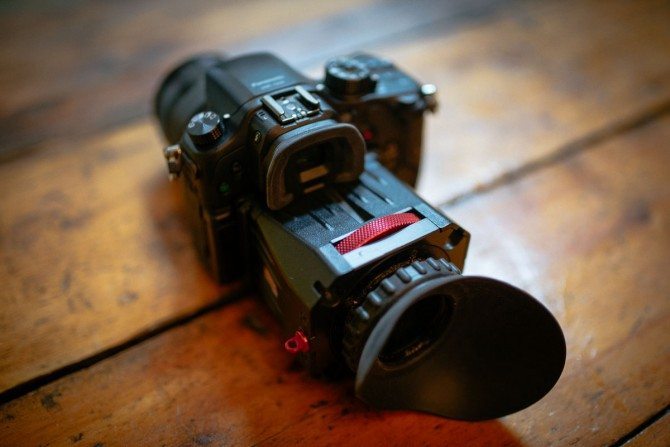
EDIT 14th May 2014: We all love slow motion, and whilst we won’t get any out of the 4K mode, in 1080p mode we can get up to 96fps over crank. Now, it’s not perfect. The image takes a hit in this mode as moire/ aliasing pop up. I have seen a little moire in normal speed HD but none in 4K, as it samples 1:1. Still, both the FS700, F5 and F55 suffer some moire and aliasing in their high speed modes.
It’s also definitely softer. You can sharpen it up post, to a degree. Despite that, it is lovely to have full HD 96fps in this camera. I am not sure why 96fps has been chosen, well obviously it’s because of this obsession with Panasonic that 24p is THE filmmaking frame rate. Well it’s not, especially with the internet and for most people using these types of cameras not for cinema but for cinematic look. Most of the world are actually 50hz, so giving us 100fps to would make a lot of sense.
I popped out just after initially publishing this review to grab a few 96fps shots down by the Riverside in Richmond as it was a lovely evening. Unfortunately nobody was down there! Weird. So as I was getting a few shots of the lovely sunset some geese and ducks came over to me demanding to be shot in slow motion on the new GH4, especially if I was using a speedbooster and that Sigma!
All handheld/ resting on my man bag. Glass: Lumix 12-35mm F2.8 with OIS and a Nikon mount Sigma 18-35mm F1.8 with the Metabones Speedbooster for the Blackmagic Cinema Camera.
Make sure you check out James Miller’s “lens whacking” piece shot at 96fps after this!
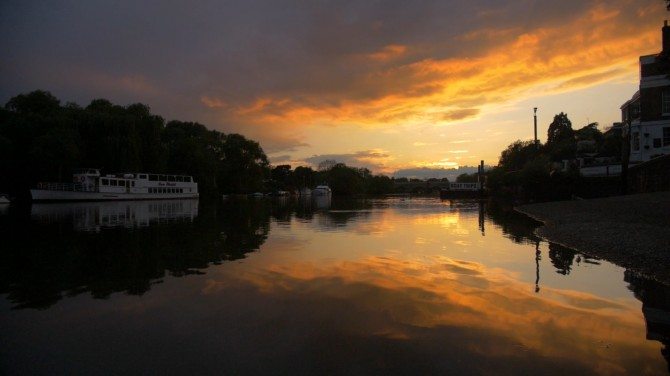

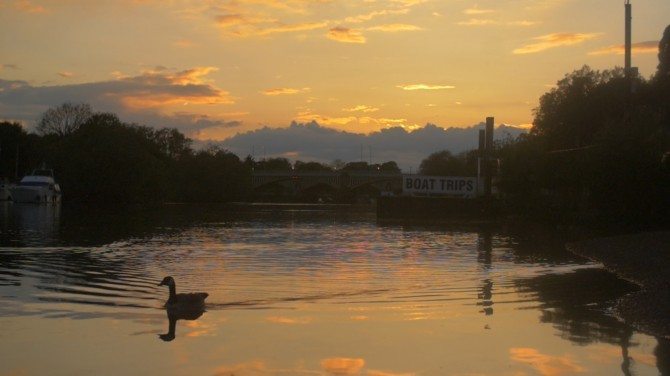
![]()
That’s it for now. So far? Really impressed. This is a groundbreaking camera. 4K internally is a big deal, and the fact it looks this good is terrific. Yes the bit rate is a bit low at 100 mb/s but it means you can edit this a lot easier, and if you need higher than you need to get an external recorder. Of course almost everyone reading this doesn’t actual need 4K, but with the 4K being so clean and detailed, the creative uses on a 1080p timeline are huge..PLUS scaling down the 4K image to HD yields a superior 1080p image. It may be slightly cropped compared to normal HD mode but that’s why you get a speedbooster. The MFT mount is so flexible for lens adaptors, just like the Sony E-mount…that is apart from if you want to use Canon glass!
I am excited by this camera. It’s small, is packed with astonishing features, gives me a terrific image, and is bloody cheap. I need to do a lot more testing before giving my “Should I buy it” sort of opinion, not that I am ever black and white like that, but so far the biggest issues are the low light performance and the usual rolling shutter issues. Those issues aside, from my experience with it the past 5 days, I can see this camera potentially becoming THE next big thing for low budget filmmakers…maybe! It is also truly 4K for the masses, as the file sizes are not monstrous and can be edited a lot easier than any other 4K I have used. The HD is good, it just looks kinda average when compared next to the 4K of the camera. It’s not surprising, as once you shoot 4K everything else looks not as good!
There is still much to try out and learn with this camera, but that will be featured in my video review. I am going to be in Thailand next week, so it will be a great place to shoot some stuff and really see if the camera lives up to first impressions!
